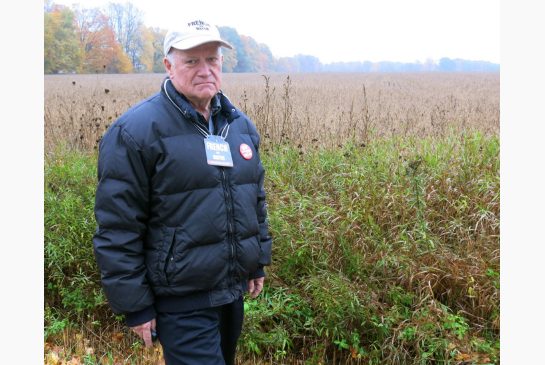Toronto Star: Development plan divides Simcoe County village

In Midhurst, residents say a ‘special rule’ allows sprawl and developers are preparing to put shovels in the ground, but the fight isn’t over
By: Rachel Mendleson Toronto Star
In a rural village in Simcoe County, concerned residents have turned the municipal election into a referendum on growth, and to some extent, the province’s efforts to limit sprawl in the fertile farmland north of the protected Greenbelt.
At the heart of the issue, according to residents, is a “special rule” created by the province in 2012 that effectively green-lighted a major development in Midhurst, a sleepy community tucked in the trees just beyond the bustle of Barrie.
The first phase of the project will put houses on hundreds of hectares of prime agricultural land and is projected to eventually quintuple the population, from 3,000 to 18,000. Without the special rule, residents say the development would not have been allowed under Ontario’s policies for growth in the area, which are outlined in the Places to Grow Act.
The township and the county insist the fight is over. The developers, meanwhile, maintain they followed due process. They plan to break ground as early as next spring, pending environmental approvals.
The local ratepayers’ association, however, is determined to reopen debate about the future of their community and stop what they describe on campaign flyers as “a sinister process full of backroom deals and special loopholes, just for Midhurst.”
On their side is a slate of candidates promising to lobby the province to reverse the special rule.
The slate includes mayoral candidate Bill French, who said he believes this battle affects all Ontario residents. Although Queen’s Park established policies such as Places to Grow to encourage smart growth and protect disappearing farmland, French said the special rule undermines those provincial guidelines — and puts all sensitive land at risk.
“This isn’t about Midhurst,” he said. “If (developers) can create this sprawl territory in all of our small municipalities, they will dilute Places to Grow.”
The developers are firing back.
“Someone is lying to you,” cautions a flyer from the Midhurst Landowners Group, a consortium of development companies. “They want to influence your Oct. 27 municipal election vote by lying about the future of Midhurst.”
The developers maintain the development adheres to strict environmental guidelines and will not raise taxes, contrary to the claims on the competing flyer from the residents’ group, which they describe as “fear-mongering.”
“The municipality and the county and the landowner group have been following the process that has been set out in the local official plan, the county official plan and the provincial growth plan,” said Cheryl Shindruk, executive vice-president at Markham-based Geranium Corp. (Geranium is the majority landowner for the project.)
“To suggest that somehow there’s been some backroom deal and some special exemption given is just wrong,” Shindruk said. “That has been put out there by there folks who don’t want to see development happen.”
Controversy over the special rule dates back to 2012, when the local growth plan for the village, called the Midhurst Secondary Plan, was tied up in appeals at the Ontario Municipal Board.
The plan sought to allow residential development on a much larger section of Midhurst, including the Midhurst Landowners Group site. Although the township and the county had approved the plan, the Ministry of Municipal Affairs and Housing intervened, arguing that the plan violated the province’s policies on growth in the area.
That changed when the ministry added a special rule to the transition provisions in Places to Grow and partially withdrew its appeal, allowing development on 300 hectares.
In an email, Municipal Affairs ministry spokesman Mark Cripps said that although “Midhurst qualified for the Special Rule,” it “is not specific to Midhurst and is one of several transition provisions” in Places to Grow.
Cripps said the rule limited development to less than half of the 756 hectares that had been supported by the county and township.
However, according to environmental lawyer David Donnelly, who has been involved in a number of land-use battles in Simcoe County, the special rule is “one of the most extreme examples in Ontario of ministerial discretion being used (to) bypass planning laws designed to limit urban sprawl.”
“The Midhurst special rule is like hitting the jackpot in a lottery, when the government only sold one ticket,” he said.
(Donnelly is not representing any party in this dispute.)
Late last year, amid growing concern from residents, the township council held a special meeting to discuss the legal ramifications of repealing the Midhurst Secondary Plan.
After the township solicitor outlined the “potential liability” for the township, councillors voted not to go down that road.
In a letter to township Mayor Linda Collins earlier this month, Premier Kathleen Wynne said “we do not plan to review the Midhurst Secondary Plan or the Special Rule in the Transition Regulation.”
But residents say they are holding out hope that they can either stop the project at the environmental assessment phase, or that a new council can convince the premier to take another look.









Leave a Reply